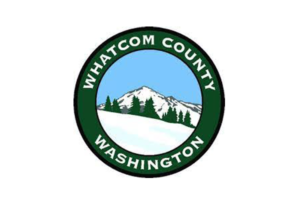Innovation in rural grocery stores is a story of community building. Small-town grocery stores are the heart of their communities, yet many struggle to compete with dollar stores, a shrinking customer base, maintaining aging buildings, and changing customer demands for fresh produce and greater variety. The USDA found that between 1990 and 2015, rural non-metro counties lost 39% of their grocery stores (USDA, The Food and Retail Landscape Across the United States, 2022).
Keeping grocery stores alive in rural communities presents the necessity for creative solutions. While they will never produce high profit margins, keeping the doors open ensures valuable access to healthy food, supports local economies, and preserves a community hub, serving as a place to meet, shop, and even enjoy a cup of coffee.
The biggest reason for closure is the failure to secure a new generation of owners (RGI, Findings From the 2021 Kansas Rural Grocery Survey). Many grocery store owners are retiring, and private operators lack the resources to take on the costs many of these stores need to renovate, let alone operate. As such, small towns are rethinking their role in ensuring the sustainability of a grocery store and how it serves the community.
While the examples of community-led models are seemingly endless, a few are summarized here. (The Rural Grocery Initiative dedicated a year’s worth of webinars on Rural Grocery Succession Planning that are worth checking out.)
Rural Grocery Store Operating Models
| Community-Owned– To help mitigate the high upfront investment to purchase or re-open a store, many towns advocate for multi-ownership. This becomes less of a financial risk to one operator, and further, involving the community is a way to make sure they have buy-in and will support the grocery store, which will likely still have higher prices than the chain store 20 miles away. The most common model is a consumer cooperative. Shoppers own the co-op by purchasing shares (“members”). Members vote for the Board of Directors, who then control store operations, including hiring/overseeing the store manager. Members also have benefits like discounts and even an annual dividend (assuming there is a profit margin). |
| Municipality-Owned– In some cases, a city government may decide to purchase and run the store. This route also needs significant public support as there should be a consensus that access to groceries is a vital service and economic driver. This model’s advantages are the ability to offer competitive benefits to the store manager and full-time employees, who are then considered city employees. |
| Nonprofit– Another solution is for grocery stores to become nonprofit enterprises. In these cases, a town may form a separate nonprofit, or a local existing nonprofit or Community Development Corporation (CDC) buys and operates the grocery store. The nonprofit board hires and oversees the manager. As a nonprofit, the store can add community programming and receive government, corporate, and private grants. |
The Extra Sauce
We have learned that there are a few intangibles that help rural grocery stores continue to exist.
- Belief in the Common Good. The reality is that small-town grocery stores will never bring in large profits. Keeping them alive requires a mutual understanding (especially by the owners) that the store plays a key role in the town’s economic and social fabric.
- Time Building Community Buy-In. While one or two people champion many rural grocery visions, they alone can not sustain the operation. Building buy-in is a necessary step in the process to ensure residents agree this is the best solution and they patronize the store. Activities may include surveys, town hall meetings, information sessions, and ways for people to stay connected through the process (i.e., tours, social media, and store websites).
- Maintaining a Community Flavor. Because rural grocery stores are not part of larger chains, they can take the initiative in how they become a community asset. They might carry local foods and handmade goods, operate a small cafe or deli inside, build a commercial kitchen for small food businesses, and even have the flexibility to support community causes.
- Taking Advantage of Financing Options. Because rural grocery stores provide needed access to healthy food and sustain local economies, they can take advantage of funding opportunities. One of the most popular grants is the Healthy Food Financing Initiative which offers financial assistance to help healthy food retailers overcome higher costs and initial barriers to entry in underserved areas across the country. Check out your state economic development department, the USDA Rural Development, and local Community Development Block Grants (CDBG) for more possible funding options.
Read our other posts on grocery innovations:
CO-OP GROCERY: A SOCIAL JUSTICE MOVEMENT
RURAL GROCERY FOOD HUBS: OUR FINDINGS, THE FUTURE AND A WIDGET
5 FANTASTIC IDEAS FOR BUILDING RESILIENCY IN SMALL TOWN GROCERY STORES FROM THE RURAL GROCERY SUMMIT
RISKY BUSINESS: GOOD FOOD IN SMALL STORES
RURAL GROCERY STORES AS FOOD HUBS — 2 BIRDS, 1 STONE?
Photo courtesy of Jesse Brothers Sioux City Journal



